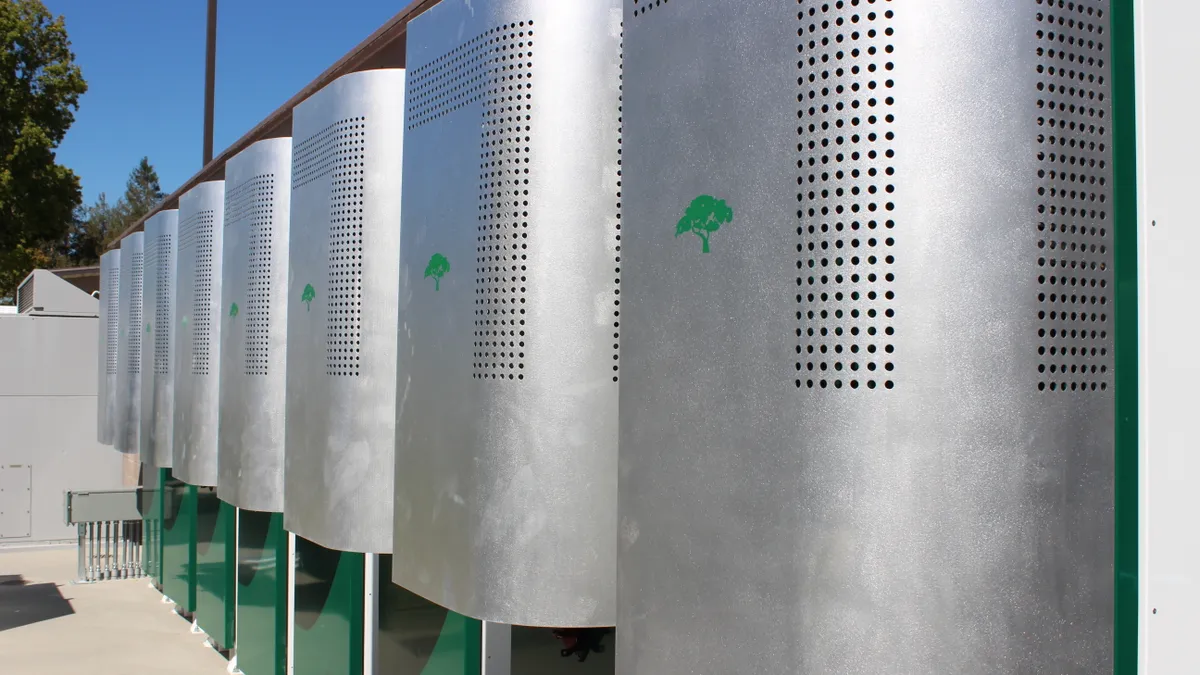Dive Brief:
- Massachusetts must procure 200 MWh of energy storage by January 1, 2020, according to new targets set by the state Department of Energy Resources Friday.
- The agency allocated $10 million in funding for demonstration projects and will evaluate the whether storage resources should be allowed to participate in the Alternative Portfolio Standard.
- Legislation passed more than a year ago tasked DOER with crafting an energy storage target. A study released by the agency at the end of 2016 said the state could reach as much as 600 MW if all proposed programs are adopted.
Dive Insight:
Massachusetts released its highly-anticipated energy storage target a day before its July 1 deadline. The target aims to help the state reach its renewable energy goals, including procuring 1,600 MW of offshore wind.
“As the Commonwealth continues to make unparalleled investments in renewable energy, energy storage technologies have the potential to play an integral role in effectively deploying these new resources,” said Gov. Charlie Baker (R) in a statement.
While the number is considerably less than the potential 600 MW, it's still significant for a state with a relatively nascent energy storage market.
The DOER will consider refining existing procurement protocols, partnerships between companies and awardees in pilot programs and energy efficiency funds to achieve to meet the target. Utilities are also given the flexibility to identify the most cost-effective applications and locations for storage, including front-of-the-meter and behind-the-meter.
Utilities are required to submit a report to the DOER by January 2020 detailing how they met the target. And, depending on how successful the effort is, the agency could set more procurement goals beyond 2020.
Increasing numbers of states are setting incentives and mandates for energy storage. California set the nation's first and largest storage target in 2013, targeting 1.3 GW by 2020. In May, regulators in the state directed utilities to procure an additional 500 MW of behind-the-meter storage.
Nevada's governor signed a bill earlier this month for an energy storage incentive, though he nixed a bill expanding the Renewable Portfolio Standard, which included a carveout for storage. Maryland also has a 30% tax incentive for storage facilities.
New York is the most recent example of this trend. Lawmakers passed bills mandating state agencies to develop an Energy Storage Deployment Program and include a storage procurement target for 2030.














